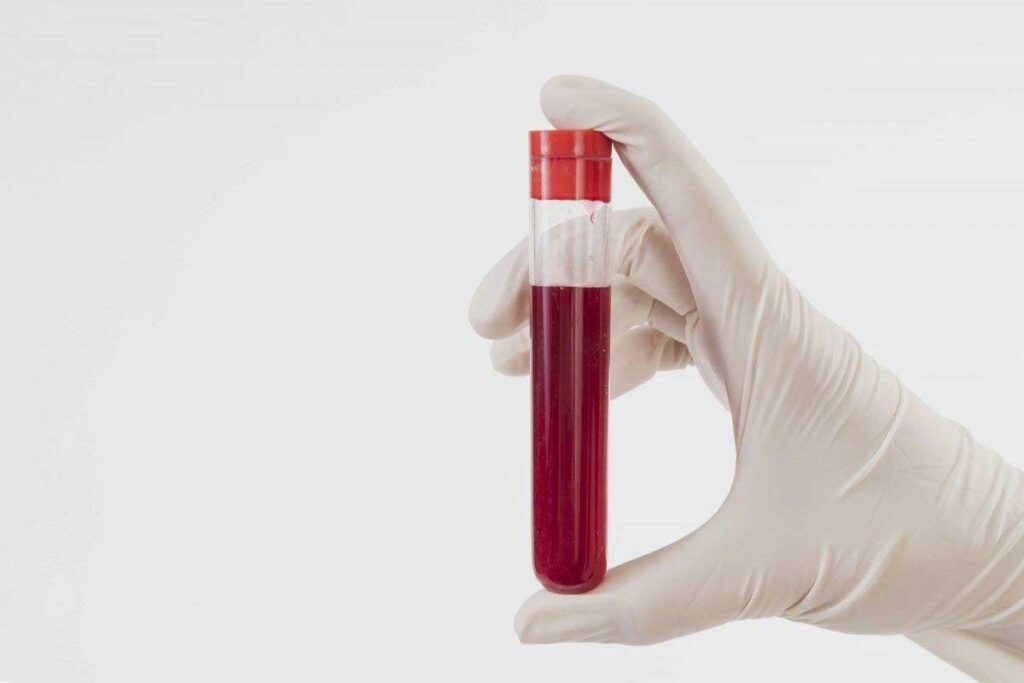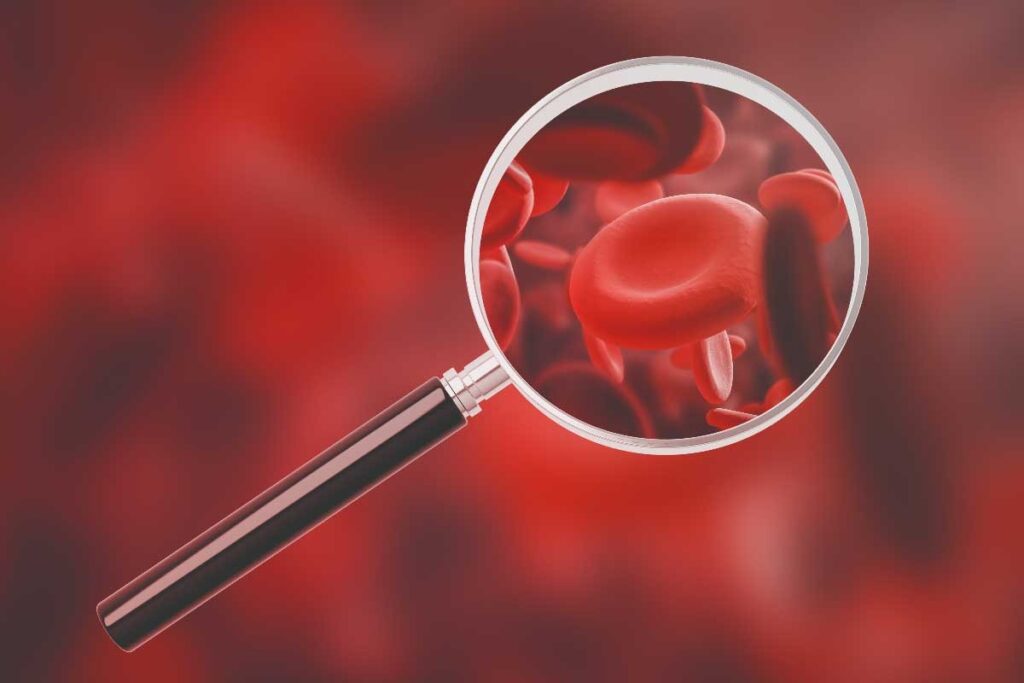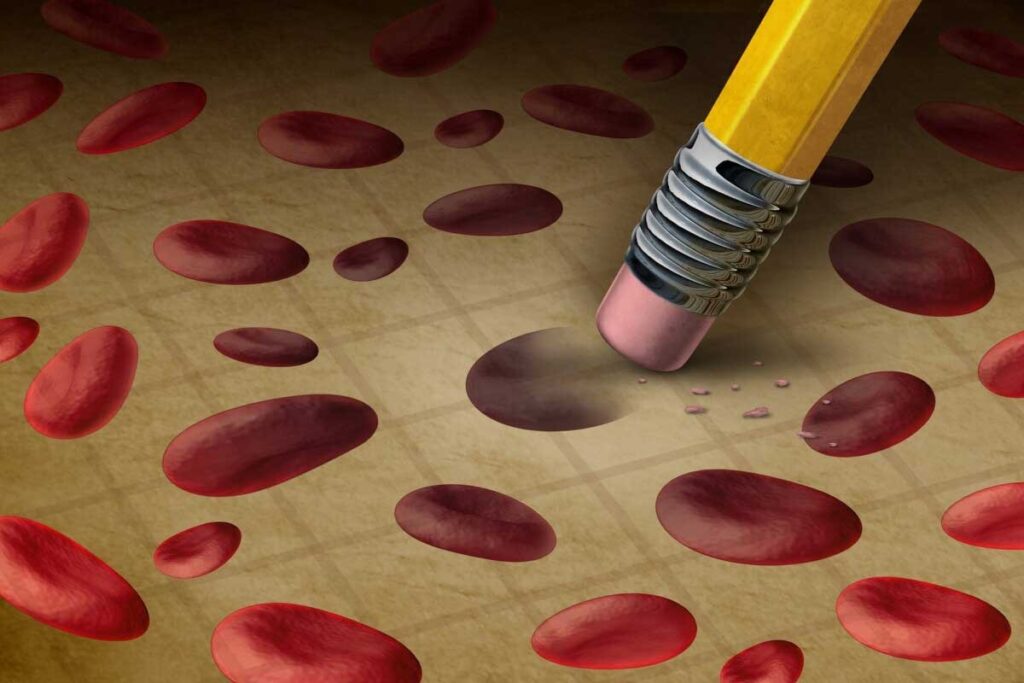
Aplastic anemia is a rare but serious blood disorder. It happens when the bone marrow fails to make enough blood cells. Prompt recognition and intervention are key because it can be deadly if not treated. Learn 10 major signs and symptoms of aplastic anaemia and understand the most common causes.
At LivHospital, we know how serious this condition is. We see that unexplained fatigue, frequent infections, or persistent bruising might mean aplastic anemia.
Knowing the key signs and symptoms is important for early diagnosis and care. Our patient-centered approach and global expertise help us diagnose and support those with this life-threatening disease.

Aplastic anemia is a serious condition where the bone marrow can’t make enough blood cells. This leads to health problems.
Bone marrow is inside bones like the hips and thighbones. It makes red blood cells, white blood cells, and platelets. These cells are vital for our health.
Stem cells in the bone marrow turn into these blood cells. This process keeps our body healthy by replacing old or damaged cells.
In aplastic anemia, the bone marrow can’t make enough blood cells. This causes pancytopenia, a low count of all blood cells. Symptoms include fatigue, infections, and bleeding.
Knowing what causes aplastic anemia is key for early treatment. It can be triggered by toxins, medications, and viruses. Spotting symptoms early can help manage the disease better.

Adults with aplastic anemia may show a wide range of symptoms. These can be mild or severe and may come on suddenly or slowly. It’s important to know how this condition can show up differently in people.
Symptoms of aplastic anemia in adults can start suddenly or slowly. Sometimes, symptoms can appear quickly, needing fast medical help. Other times, they may come on more slowly, making it hard to know if they’re serious.
Look out for these key symptoms:
It’s vital to know when symptoms are serious. Untreated, aplastic anemia can cause severe problems, like dangerous infections and bleeding. If you have:
Seeing a doctor early can greatly help. Knowing the signs of aplastic anemia can lead to better care and prevent serious issues.
Being aware of aplastic anemia symptoms is key. If you notice any, seeing a healthcare professional is essential for the right care.
One of the earliest signs of aplastic anemia is feeling fatigue and weakness. This happens when the bone marrow can’t make enough blood cells. Red blood cells are key for carrying oxygen to our tissues.
Not having enough red blood cells leads to tiredness in aplastic anemia patients. Red blood cells carry oxygen from the lungs to our body’s tissues. Without enough, our tissues don’t get the oxygen they need, making us feel very tired and weak.
This is like a car without fuel. Just as a car can’t move without gasoline, our body’s tissues can’t work right without enough oxygen. The heart has to work harder to get oxygen to our tissues, making us even more tired.
The fatigue and weakness from aplastic anemia really affects daily life. Even simple tasks like grocery shopping or cooking can be hard. Patients often need to rest a lot, even from everyday activities.
This condition also affects our social life and mental health. It can make us feel isolated and lead to anxiety and depression. So, if you’re always tired and weak, it’s important to see a doctor. Early treatment can really help improve your life.
Aplastic anemia makes it hard for the body to fight off infections. This is because it doesn’t have enough white blood cells. White blood cells are key to our immune system, helping us stay healthy.
Aplastic anemia stops the bone marrow from making white blood cells. These cells, like neutrophils and lymphocytes, are important for fighting infections. Without them, the immune system is weakened.
Key consequences of white blood cell deficiency include:
Patients with aplastic anemia face many infections because of their weak immune system. Some common ones are:
Managing infections is key for aplastic anemia patients. This includes avoiding infections and treating them quickly with antibiotics or antifungals.
Dealing with frequent infections is tough for patients and their families. It’s important to work with healthcare providers to watch for signs of infection and plan how to manage them.
Unusual bleeding and bruising are key signs of aplastic anemia. This is because of low platelet counts. Platelets help blood clot, and without enough, bleeding can become a big problem.
Platelet deficiency often causes bleeding that won’t stop from small cuts. Even tiny injuries can lead to long-lasting bleeding. This is something that needs quick medical help.
Nosebleeds and gum bleeding are common too. They can happen on their own or when you do something like blow your nose or brush your teeth. How often and how bad these happen can differ from person to person.
Women with aplastic anemia might have very heavy or long menstrual periods. This can be very uncomfortable and make anemia worse because of the blood loss.
To better understand the impact of these symptoms, let’s examine a summary of the bleeding tendencies associated with aplastic anemia:
| Symptom | Description | Impact on Patients |
| Prolonged Bleeding | Bleeding that lasts longer than usual from minor cuts and wounds | Increased risk of anemia, need for immediate medical attention |
| Nosebleeds and Gum Bleeding | Spontaneous or trauma-induced bleeding from the nose and gums | Frequent episodes can lead to discomfort and anxiety |
| Heavy Menstrual Periods | Excessive or prolonged menstrual bleeding | Discomfort, increased risk of anemia, and possible need for hormonal or other treatments |
It’s important to know about these bleeding signs to manage aplastic anemia well. If you’re experiencing these symptoms, talk to your doctor for the right advice and treatment.
Petechiae and purpura are common in aplastic anemia. They show how the disorder affects blood cell production. These signs happen because of a lack of platelets, which are key for blood to clot.
Petechiae are small spots on the skin from tiny blood vessel breaks. They show up in people with low platelet counts, a sign of aplastic anemia.
These spots can pop up anywhere but often on legs, arms, and face. They are flat and don’t fade when pressed, unlike other rashes.
Purpura is bigger bruises or skin color changes from bleeding under the skin. Like petechiae, it’s linked to low platelet counts and can signal aplastic anemia.
Purpura can look different, from small patches to big areas. These bruises might be sore and change color as they heal, going through red, blue, and yellow.
| Characteristics | Petechiae | Purpura |
| Appearance | Tiny, red or purple spots | Larger bruises or discolorations |
| Cause | Minor hemorrhages from capillaries | Bleeding under the skin |
| Common Locations | Legs, arms, face | Anywhere on the body |
Petechiae and purpura are important signs that need doctor’s attention, mainly in aplastic anemia. Knowing about these symptoms helps in spotting and treating the condition early.
Oxygen deprivation is a big problem in aplastic anemia. It causes many symptoms that make life harder for patients. When the bone marrow can’t make enough red blood cells, the body’s tissues and organs don’t get enough oxygen. This leads to health issues.
Shortness of breath, or dyspnea, is a key symptom of oxygen deprivation in aplastic anemia. The body tries to get more oxygen by breathing faster. Also, the heart beats faster, or tachycardia, to send more oxygen to the body’s tissues.
These symptoms can really upset patients. They make it hard to move around and affect how well you feel. It’s important to understand how oxygen deprivation causes these symptoms to manage aplastic anemia better.
Pallor, or paleness of the skin, is another sign of oxygen deprivation in aplastic anemia. Without enough red blood cells, the skin looks pale or washed out. This is most noticeable in the face, lips, and nail beds.
Pallor is a clear sign of oxygen deprivation. It means we need to look into why the anemia is happening.
Dizziness and headaches are common in patients with aplastic anemia due to oxygen deprivation. The brain is very sensitive to oxygen levels. This can cause dizziness or lightheadedness. Headaches happen because the brain doesn’t get enough oxygen.
These symptoms can really affect daily life. It’s very important to find and fix the cause of oxygen deprivation.
| Symptom | Description | Physiological Basis |
| Shortness of Breath | Increased breathing rate to compensate for lack of oxygen | Body attempts to increase oxygen intake |
| Rapid Heart Rate | Increased heart rate to deliver more oxygen to tissues | Heart compensates for reduced oxygen delivery |
| Pallor | Paleness of the skin due to inadequate red blood cells | Reduced oxygen delivery to skin tissues |
| Dizziness and Headaches | Brain sensitivity to low oxygen levels | Insufficient oxygen reaching brain tissues |
Aplastic anemia can come from many sources, including unknown factors and toxins. Knowing what causes it helps doctors diagnose and treat it better.
Often, the cause of aplastic anemia is not found, known as idiopathic aplastic anemia. This happens when tests can’t find any known reason. Sometimes, the immune system might be involved, but we don’t know how.
Some chemicals and toxins can cause aplastic anemia. Pesticides, insecticides, and chemicals like benzene are examples. Also, some medicines, like antibiotics and anti-inflammatory drugs, can lead to it.
Viral infections can harm the bone marrow, leading to aplastic anemia. Hepatitis viruses are among those linked to it. The immune system’s fight against these viruses can destroy bone marrow cells, causing aplastic anemia.
High radiation, like from nuclear accidents, can damage the bone marrow, causing aplastic anemia. Chemotherapy, meant to kill cancer cells, can also harm bone marrow cells, leading to aplastic anemia.
Knowing what causes aplastic anemia is key to good treatment. Doctors can then create a plan that fits each patient’s needs.
It’s key to spot the signs of aplastic anemia early. We’ve talked about symptoms like fatigue, frequent infections, unusual bleeding, and skin issues.
Spotting aplastic anemia early can really help. Knowing the aplastic anemia symptoms lets people get help fast. This means doctors can act quickly.
The treatment of aplastic anemia varies based on the cause and how bad it is. Getting checked out by a doctor fast is important. It helps find the best treatment and can save lives.
Knowing the signs and symptoms of aplastic anaemia helps people take care of their health. If symptoms don’t go away or get worse, it’s time to see a doctor.
In short, knowing aplastic anemia signs and symptoms is key for early detection and treatment. Taking care of your health and getting medical help when needed can greatly improve your chances of getting better.
Aplastic anemia is a rare and serious condition. It happens when the bone marrow can’t make blood cells. This includes red blood cells, white blood cells, and platelets. It leads to health problems.
Signs and symptoms include fatigue and weakness. You might also get frequent infections and have prolonged fever. Other symptoms are unusual bleeding, bruising, and shortness of breath.
It stops the bone marrow from making blood cells. This means you don’t have enough red blood cells, white blood cells, and platelets. It causes health issues.
It can be caused by many things. This includes idiopathic factors, certain medications, and toxic exposures. Viral infections, radiation, and chemotherapy can also cause it. Sometimes, the cause is unknown.
Not having enough red blood cells makes you very tired and weak. It affects your daily life and quality of life.
They get infections easily because they don’t have enough white blood cells. This weakens their immune system. It makes it hard for their body to fight off infections.
Symptoms include bleeding from minor cuts and wounds. You might also have nosebleeds, gum bleeding, and heavy menstrual periods. These are signs of bleeding and bruising.
Petechiae are tiny red or purple spots on the skin. Purpura are larger bruises and skin discolorations. Both are signs of aplastic anemia because of a lack of platelets.
Oxygen deprivation can cause shortness of breath and rapid heart rate. You might also feel pale, dizzy, and have headaches. These are signs of oxygen deprivation in aplastic anemia patients.
Yes, aplastic anemia can be treated. Early diagnosis is key for effective management. It improves survival rates. This shows why quick medical attention is important when symptoms appear or get worse.
References
Subscribe to our e-newsletter to stay informed about the latest innovations in the world of health and exclusive offers!
WhatsApp us